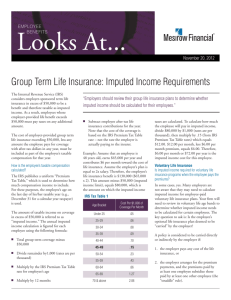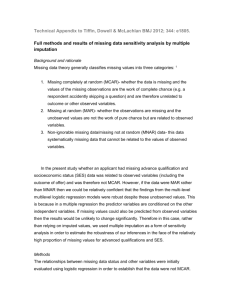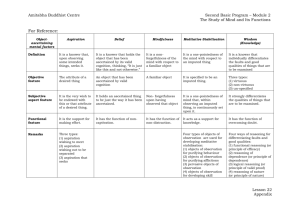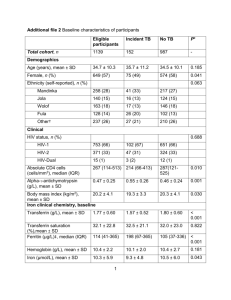Life Insurance Imputed Income Guide | Section 79 Explained
advertisement
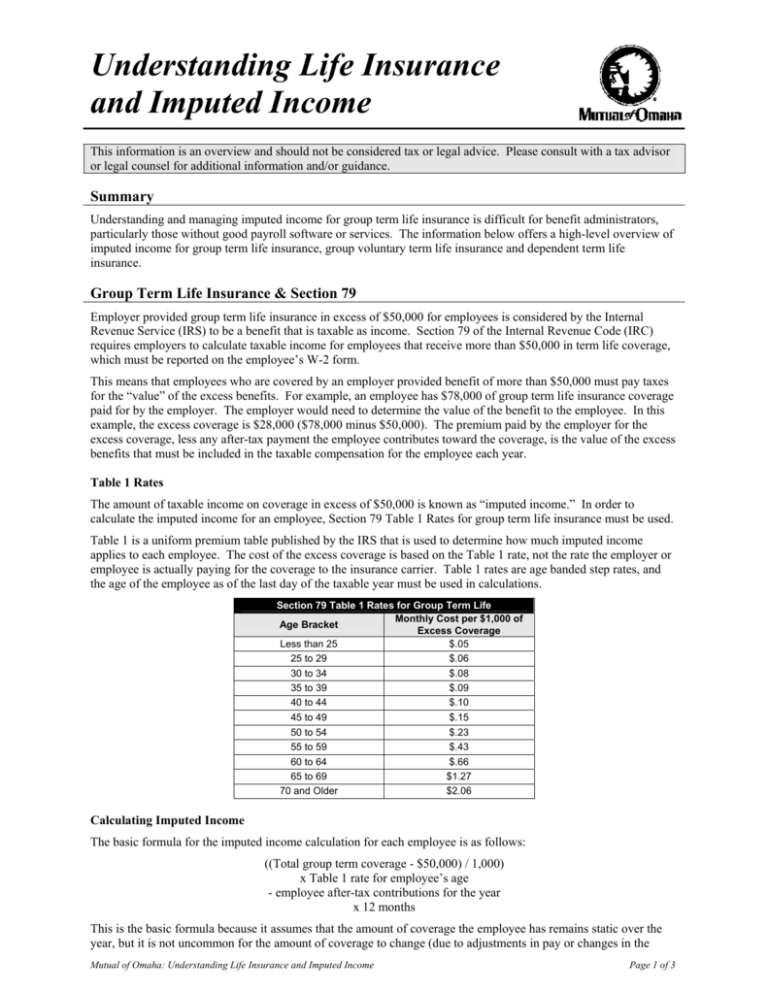
Understanding Life Insurance and Imputed Income This information is an overview and should not be considered tax or legal advice. Please consult with a tax advisor or legal counsel for additional information and/or guidance. Summary Understanding and managing imputed income for group term life insurance is difficult for benefit administrators, particularly those without good payroll software or services. The information below offers a high-level overview of imputed income for group term life insurance, group voluntary term life insurance and dependent term life insurance. Group Term Life Insurance & Section 79 Employer provided group term life insurance in excess of $50,000 for employees is considered by the Internal Revenue Service (IRS) to be a benefit that is taxable as income. Section 79 of the Internal Revenue Code (IRC) requires employers to calculate taxable income for employees that receive more than $50,000 in term life coverage, which must be reported on the employee’s W-2 form. This means that employees who are covered by an employer provided benefit of more than $50,000 must pay taxes for the “value” of the excess benefits. For example, an employee has $78,000 of group term life insurance coverage paid for by the employer. The employer would need to determine the value of the benefit to the employee. In this example, the excess coverage is $28,000 ($78,000 minus $50,000). The premium paid by the employer for the excess coverage, less any after-tax payment the employee contributes toward the coverage, is the value of the excess benefits that must be included in the taxable compensation for the employee each year. Table 1 Rates The amount of taxable income on coverage in excess of $50,000 is known as “imputed income.” In order to calculate the imputed income for an employee, Section 79 Table 1 Rates for group term life insurance must be used. Table 1 is a uniform premium table published by the IRS that is used to determine how much imputed income applies to each employee. The cost of the excess coverage is based on the Table 1 rate, not the rate the employer or employee is actually paying for the coverage to the insurance carrier. Table 1 rates are age banded step rates, and the age of the employee as of the last day of the taxable year must be used in calculations. Section 79 Table 1 Rates for Group Term Life Monthly Cost per $1,000 of Age Bracket Excess Coverage Less than 25 $.05 25 to 29 $.06 30 to 34 $.08 35 to 39 $.09 40 to 44 $.10 45 to 49 $.15 50 to 54 $.23 55 to 59 $.43 60 to 64 $.66 65 to 69 $1.27 70 and Older $2.06 Calculating Imputed Income The basic formula for the imputed income calculation for each employee is as follows: ((Total group term coverage - $50,000) / 1,000) x Table 1 rate for employee’s age - employee after-tax contributions for the year x 12 months This is the basic formula because it assumes that the amount of coverage the employee has remains static over the year, but it is not uncommon for the amount of coverage to change (due to adjustments in pay or changes in the Mutual of Omaha: Understanding Life Insurance and Imputed Income Page 1 of 3 amount of insurance due to a life event). If changes occur, it is necessary for the employer to modify the formula and calculate imputed income for each period of different coverage. It is also important to note that only an employee’s after-tax contributions to the coverage factor into the imputed income calculation. If an employee’s contribution is deduction from pay before taxes are paid, then the IRS considers the amount paid by the employee to be an employer-paid contribution, which cannot be considered when calculating imputed income. Sample Imputed Income Calculation An employee is 42 years old and earns $38,000 annually. The employer offers a term life benefit of three times salary, to which the employee contributes $2.50 a month after-tax toward the cost. The employee’s life insurance benefit is $114,000. The value of the amount on which the employee must pay taxes is $64,000 ($114,000 minus $50,000). To calculate imputed income, $64,000 is divided by $1,000 (since Table 1 rates are per thousand), then multiplied by $.10 (the Table 1 rate for a 42 year old). The result is $6.40 per month, less the employee’s contribution of $2.50, returns imputed income of $3.90 per month, or $46.80 per year for this employee. (((($114,000 - $50,000) / $1,000) x $.10) - $2.50) x 12 = $46.80 Voluntary Term Life Insurance & Section 79 Many employers do not know that they may need to calculate imputed income for employee-paid voluntary term life plans. Commonly, employers assume that if the voluntary plan offered is an increment plan – a plan where the employee elects coverage in flat increments of $5,000 or $10,000 between minimum and maximum coverage guidelines and pays for the coverage with after-tax dollars – that Section 79 does not apply. That isn’t always true, however, and each employer should review its voluntary term life plan carefully. Is the Plan Carried by the Employer? If a voluntary term life plan is deemed by the IRS to be “carried” by the employer, then Section 79 applies and imputed income must be calculated for some employees. Voluntary term life plans are generally considered by the IRS as employer carried if: The plan offers coverage amounts that are discriminatory (amounts that are tied to salary or other characteristics like age or service), like a plan that offers coverage in increments of salary Premiums for the coverage are paid by the employee with pre-tax dollars The employee-paid rates for the coverage “crossover” or “straddle” the Section 79 Table 1 rates in any age band Most employers try to design voluntary term life insurance plans to avoid imputed income calculations for the plan. This means the plan is designed with rates that are all above Table 1, coverage amounts that are non-discriminatory, and premiums paid by the employee with after-tax deductions. Straddling Table 1 Rates Crossover, or straddling, of Table 1 rates is determined by comparing the age banded rates employees pay for the coverage to the Table 1 rates. Straddling occurs when some employee rates are equal to or below Table 1 rates, and some are equal to or above Table 1 rates. If the employee rates are neither completely over nor completely under the Table 1 rates, then certain age brackets benefit more from the plan, and since the plan is employer-sponsored, the IRS deems the plan to be “carried” by the employer for any age brackets that fall below Table 1 rates. Income must be imputed for the value of the coverage for any rate tiers that fall below Table 1. Age Bracket Less than 25 25 to 29 30 to 34 35 to 39 40 to 44 45 to 49 50 to 54 55 to 59 60 to 64 65 to 69 70 and Older Sample Table 1 Rate Evaluation for Voluntary Term Life Table 1 Rate Employee Rate Over, Under or Imputed Income per $1,000 per $1,000 Equal? Required? $.050 $.056 Over No $.060 $.056 Under Yes $.080 $.062 Under Yes $.090 $.076 Under Yes $.100 $.117 Over No $.150 $.200 Over No $.230 $.331 Over No $.430 $.518 Over No $.660 $.808 Over No $1.270 $1.450 Over No $2.060 $2.596 Over No Mutual of Omaha: Understanding Life Insurance and Imputed Income Page 2 of 3 If an age band for a group of employees straddles Table 1 rates, both the employer-paid and voluntary coverage must be included when each affected employees imputed income is determined. For example, a 32-year old employee has $40,000 if employer-paid term life insurance, which is below the $50,000 threshold and does not require imputed income calculations. The employee elects $100,000 in voluntary term life coverage, and is in age bracket that falls below Table 1 (using the rates in the sample table above). Imputed income must be calculated for the value of $90,000 ($140,000 in total coverage minus $50,000) for this employee. Dependent Term Life Insurance & Section 79 Whether a dependent term life plan is employer-paid or voluntary, if the amount of coverage for dependents (spouse or children) is equal to or less than $2,000 for each dependent, the benefits are considered by the IRS to be minimal fringe benefits, which means the value of the premium is not taxable as imputed income. If coverage for any dependent is greater than $2,000, the cost of the coverage, less any after-tax contributions from the employee for the coverage, is considered taxable as imputed income. Imputed income for dependents is also determined by using Table 1 rates, and the $50,000 exclusion that employees receive does not apply. Section 79 Exceptions Section 79 requirements are only applicable for group term life plans, either employer-paid or voluntary. Accidental death and dismemberment (AD&D), disability, travel accident, accident or health coverage are not included. As well, any permanent life insurance coverage, such as universal life or whole life, are not included. Mutual of Omaha: Understanding Life Insurance and Imputed Income Page 3 of 3
